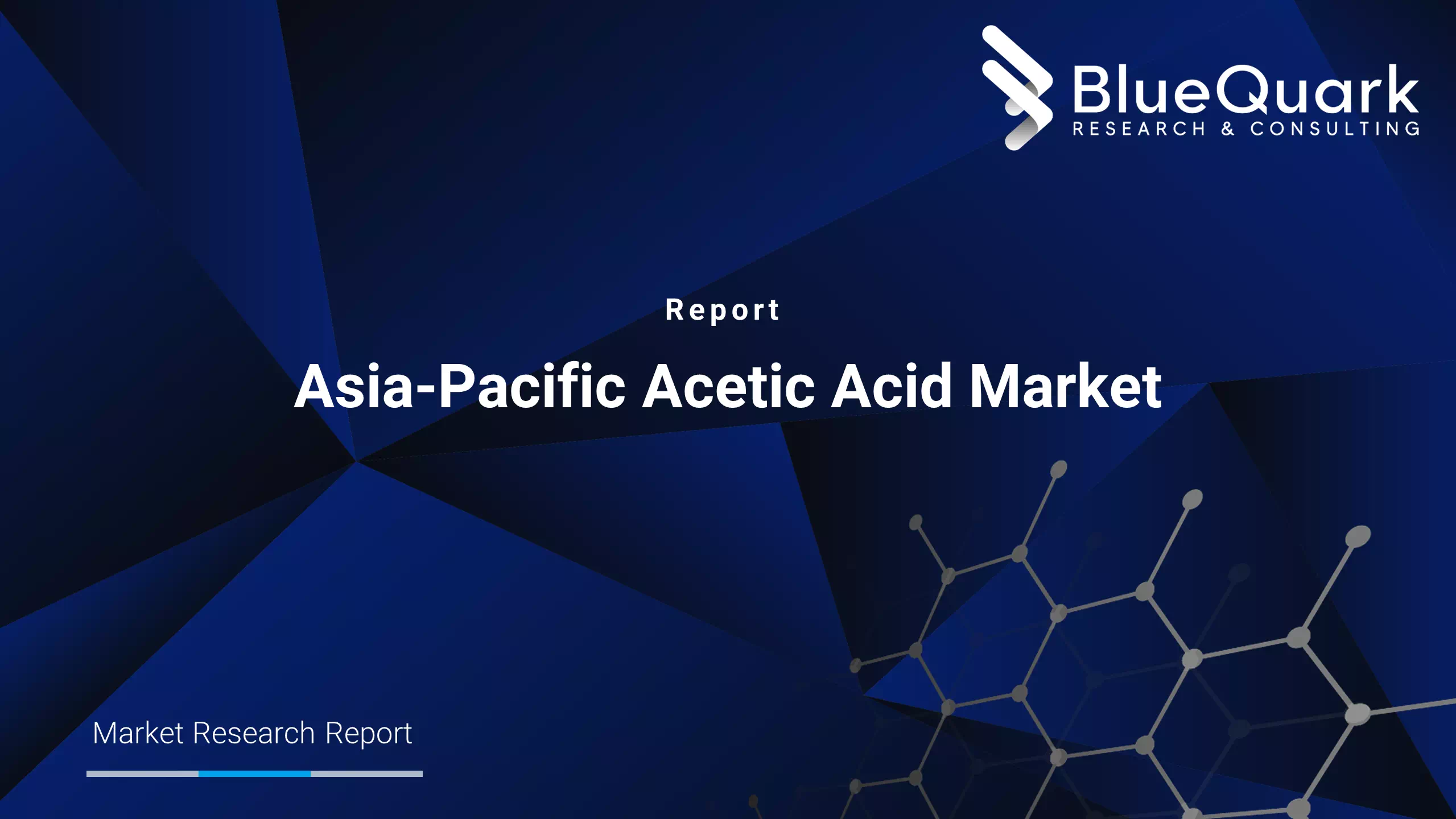
The market for acetic acid is expected to witness rapid growth in the region over the period of forecast due to an increase in the usage of vinyl acetate monomers in various end-user industries and large production capacities.
Conventional plastic food packaging is generally thrown away and makes up about one-third of the municipal waste, and 60 to 90% of all marine debris that takes centuries to degrade, choking marine animals and harming the entire ecosystem. The situation of plastic waste dumping is worse in Asian countries like China, which generates the highest amount of plastic wastes in the world. Companies present in the region are gradually shifting towards greener packaging options such as polyvinyl alcohol. Kuraray’s MonoSol is a Japanese company that has made a food-grade film of polyvinyl alcohol that is colorless and non-toxic and in its dissolved state passes straight through the body.
The Asia-Pacific acetic acid market is segmented on the basis of application and end-use. The end-use segment is further segmented as Food & Beverage, Pharmaceuticals & Healthcare, Plastics & Polymers, Paints & Coatings, Adhesives, and Textiles, among others. Ethylene-vinyl acetate, a monomer of vinyl acetate is prominently used in solar panels, and of late many significant automakers and startups in China are turning their cars into mobile solar arrays to extend the electric range of e-vehicles. In 2018, 1.1 million electric cars were sold in China, which is more than 55% of all-electric vehicles sold in the world. The higher sales of electric cars which are gradually turning into solar cars are going to be the major driving factor of the market in the region.
Some of the key players in the market are BP Plc, Celanese Corporation, PetroChina Company Limited, Daicel Corporation, Mitsubishi Chemical Corporation, and Lonza Group AG.
In October 2019, BP announced the increase of its Asian presence with an initial agreement, or memorandum of understanding, with China’s Zhejiang Petroleum and Chemical Corporation (ZPCC) to build a one million ton a year acetic acid plant. The planned production site for acetic acid would be part of ZPCC’s refining and petrochemical plant in Zhoushan in eastern China.
In March 2019, BP and Lotte agreed on a major expansion of production capacity at their joint venture Lotte BP Chemical Company Limited facility in Ulsan, South Korea. The expansion added 100,000 tonnes a year of acetic acid capacity by May 2019 through debottlenecking.
Our Asia-Pacific Acetic Acid Market report provides deep insight into the current and future state of the acetic acid market in the region. The report examines the market drivers and restraints that are influencing the growth in detail. The study also covers emerging market trends, developments, opportunities, and challenges in the industry. This report also covers extensively researched competitive landscape section with profiles of major companies and their market shares.
Asia-Pacific Acetic Acid Market, in kilotons, 2016-2025
Vinyl Acetate Monomer - Asia-Pacific Acetic Acid Market, in kilotons, 2016-2025
Acetic Anhydride - Asia-Pacific Acetic Acid Market, in kilotons, 2016-2025
Acetate Esters - Asia-Pacific Acetic Acid Market, in kilotons, 2016-2025
Purified Teraphthalic Acid - Asia-Pacific Acetic Acid Market, in kilotons, 2016-2025
Others - Asia-Pacific Acetic Acid Market, in kilotons, 2016-2025
Asia-Pacific Acetic Acid Market Share, by Country, 2018
Acetic Acid - Market Share of Key Companies in 2018
Other Supporting Charts
Polyvinyl alcohol packaging trend
Acetic Acid production trend
 Report - Global Asia-Pacific Acetic Acid Market Outlook to 2025.pdf
Report - Global Asia-Pacific Acetic Acid Market Outlook to 2025.pdf Market Data - Global Asia-Pacific Acetic Acid Outlook to 2025.xls
Market Data - Global Asia-Pacific Acetic Acid Outlook to 2025.xls